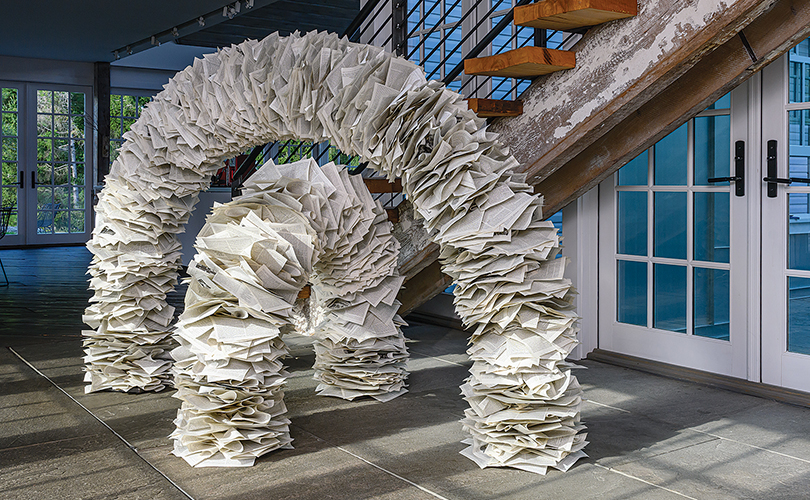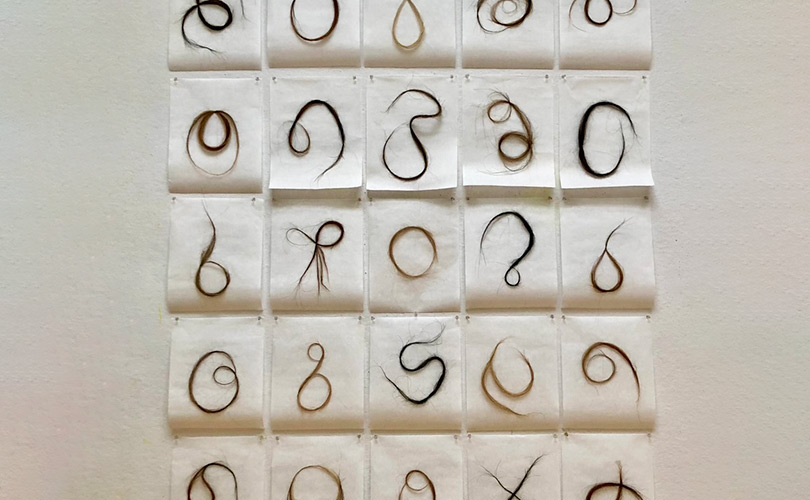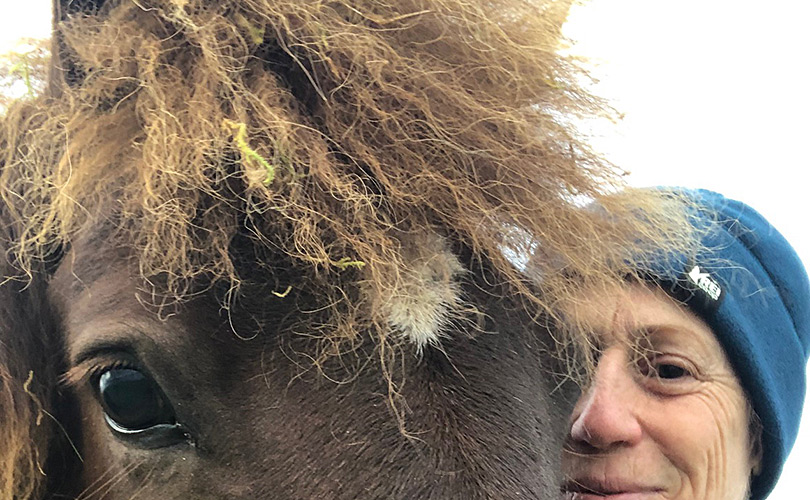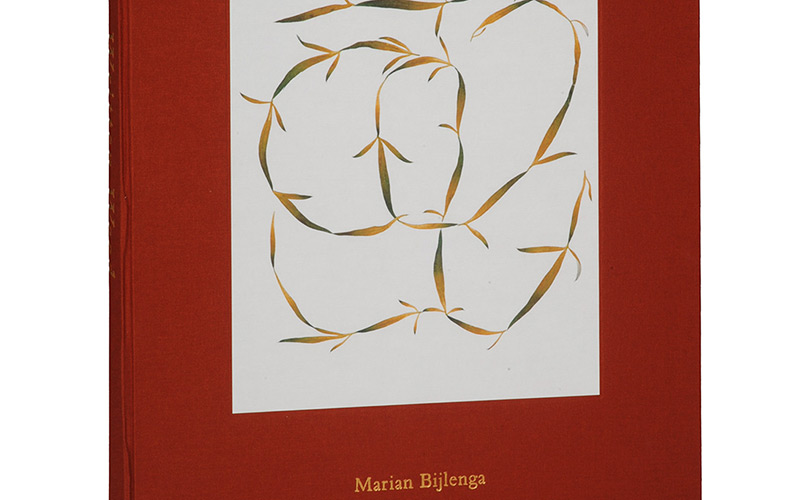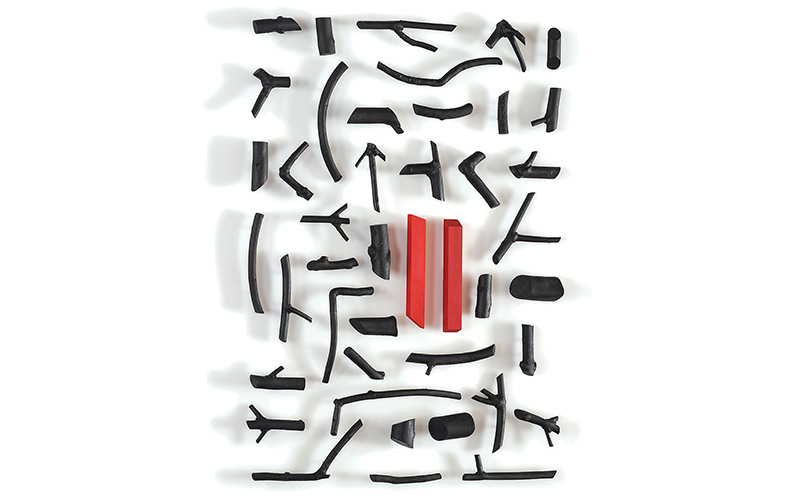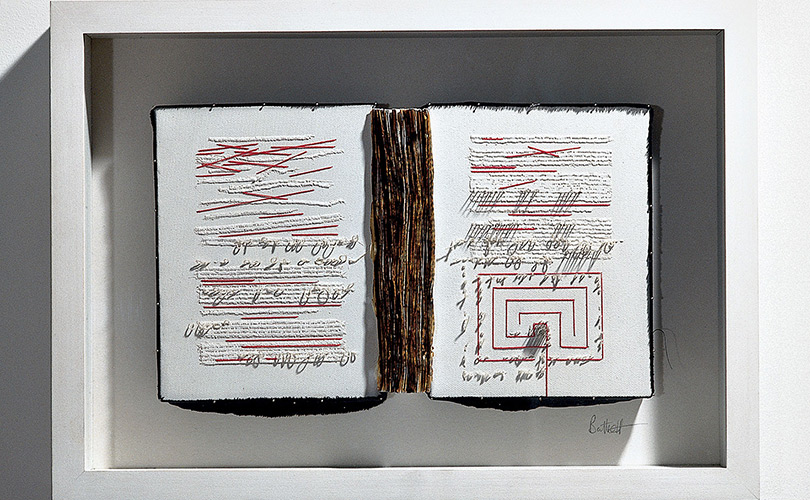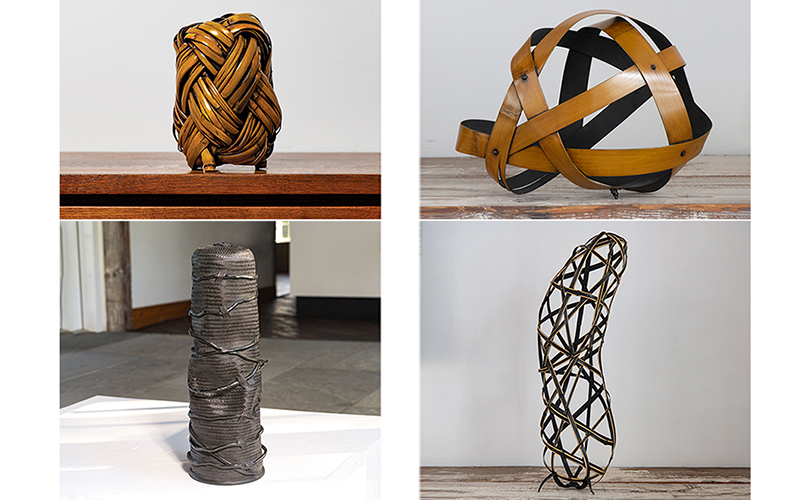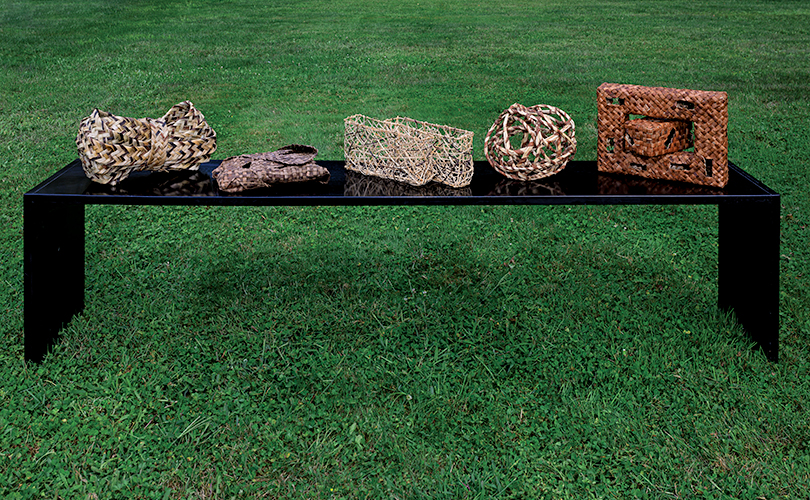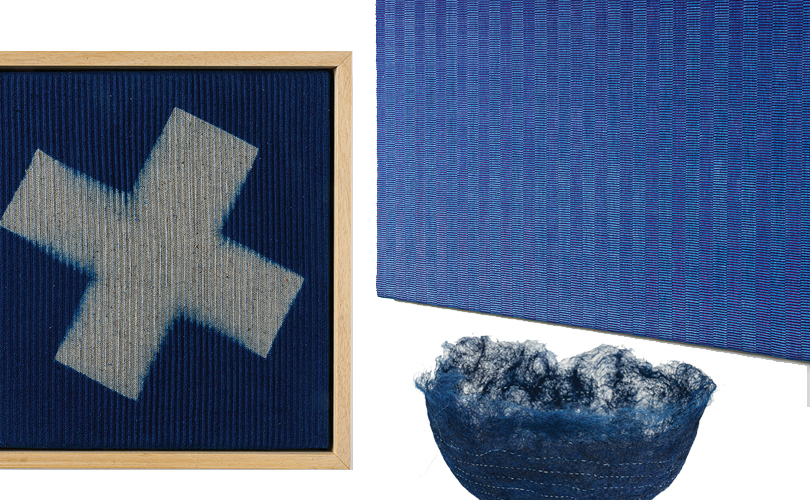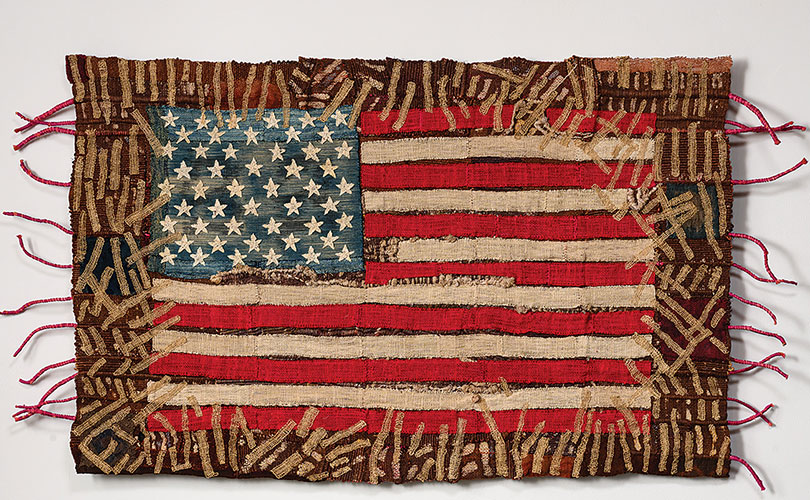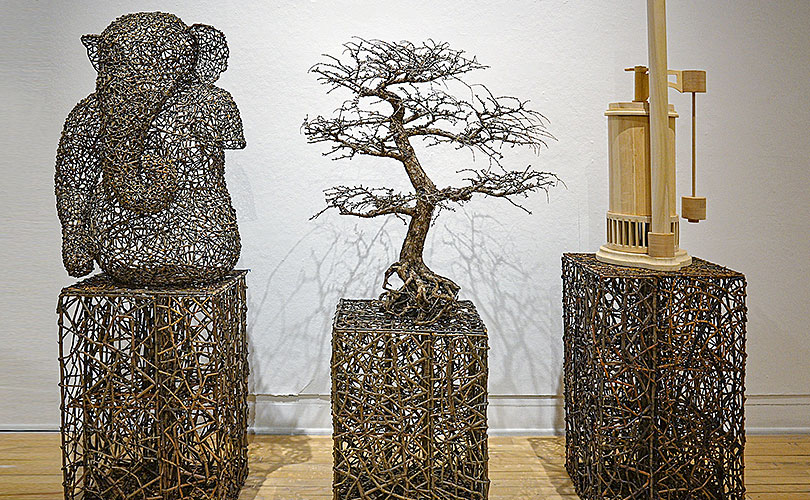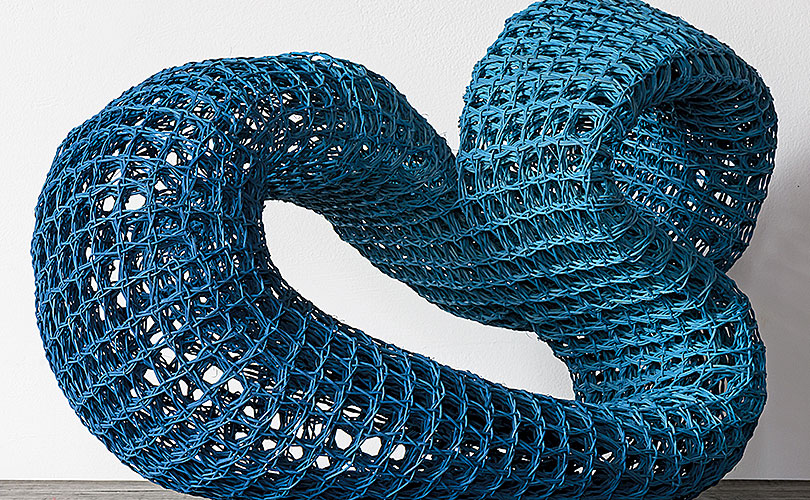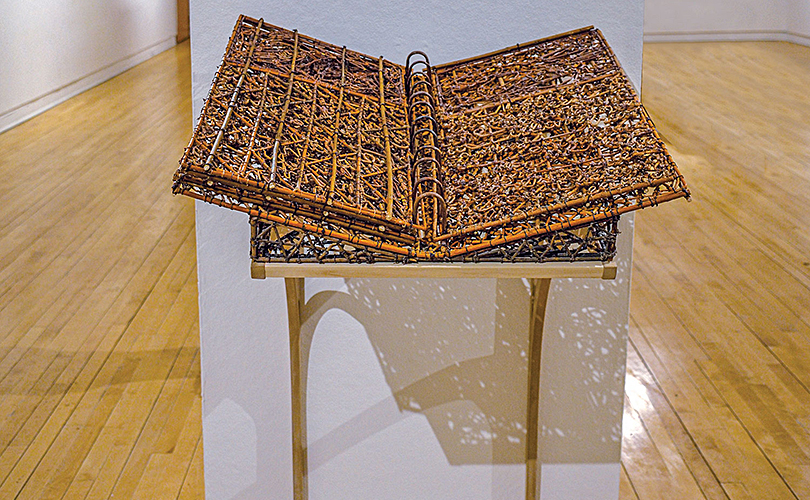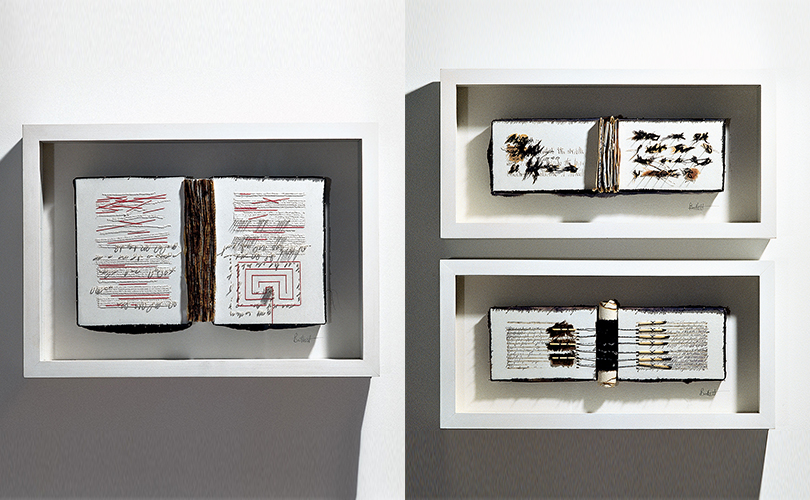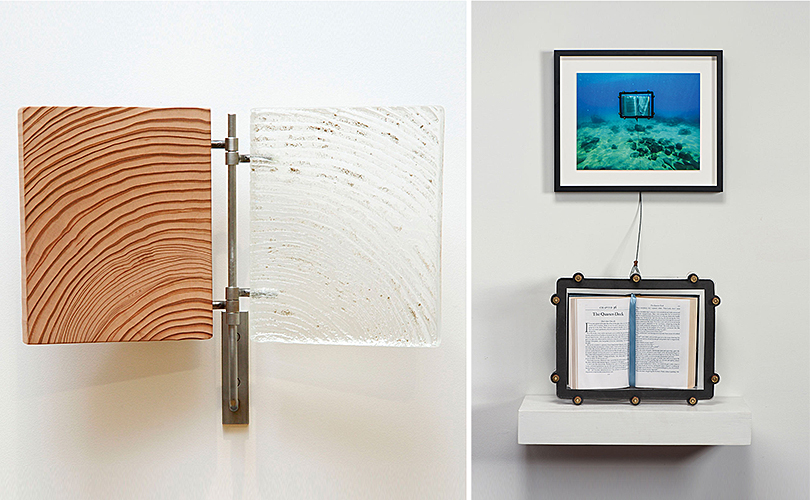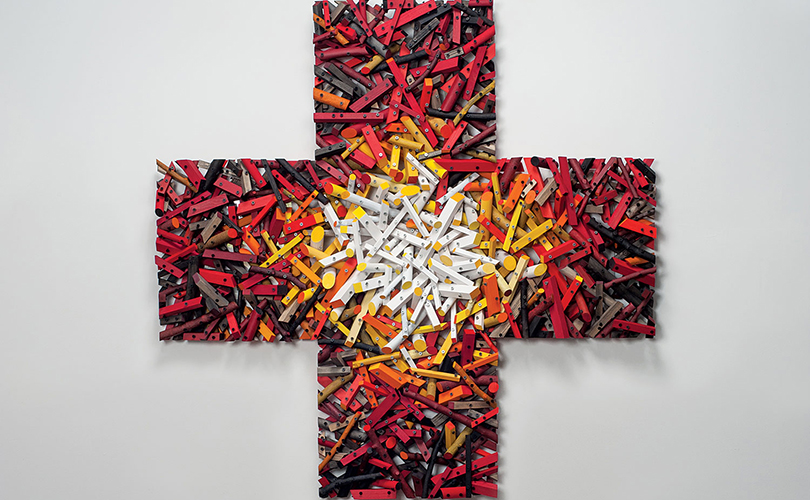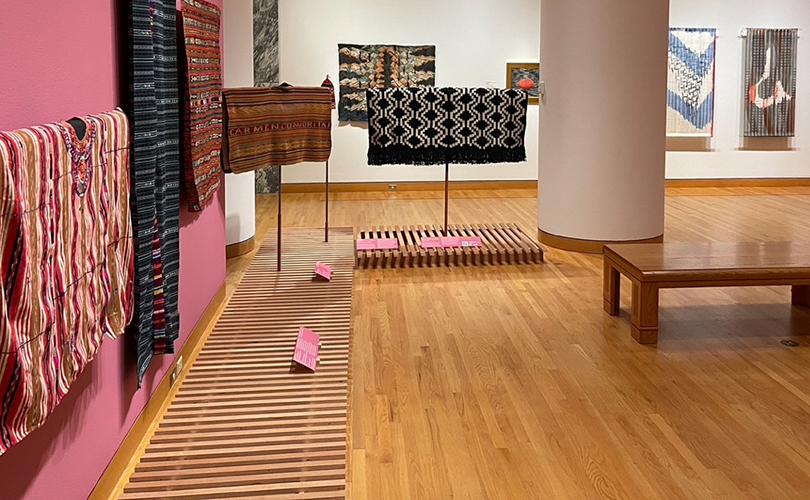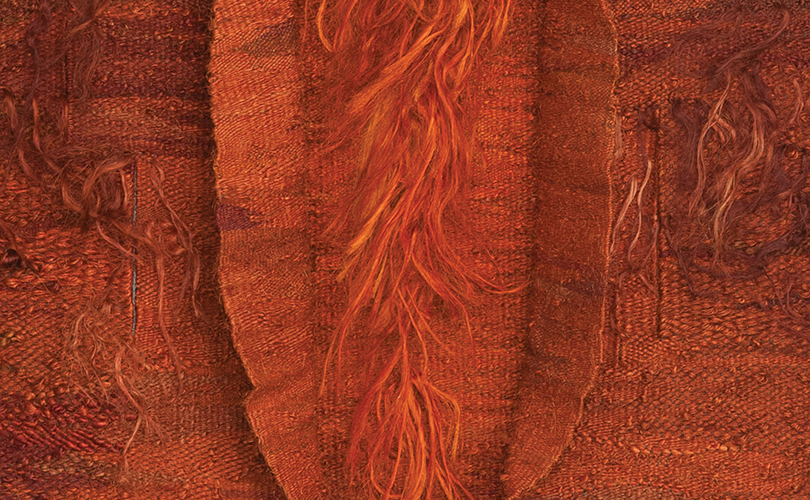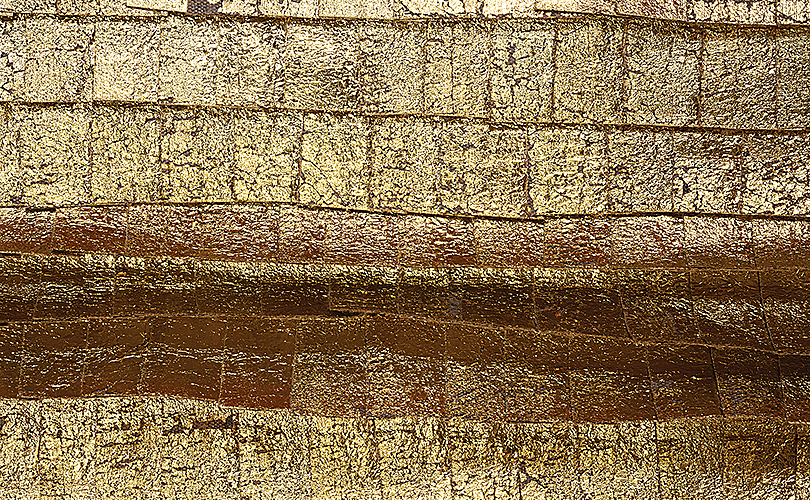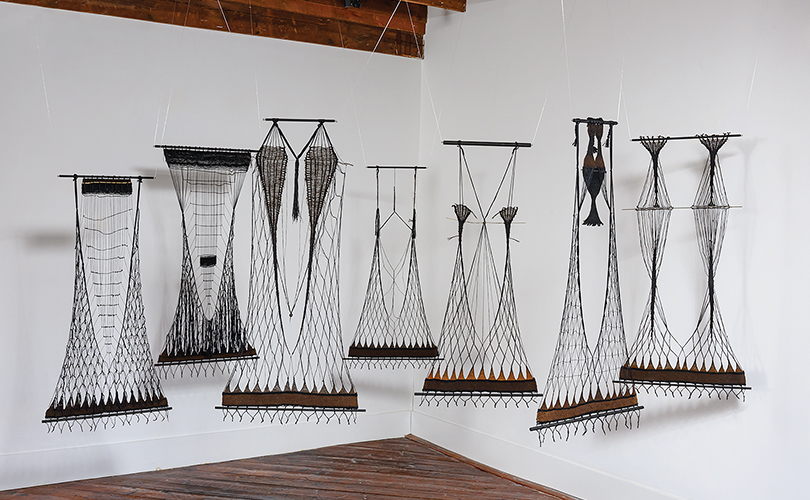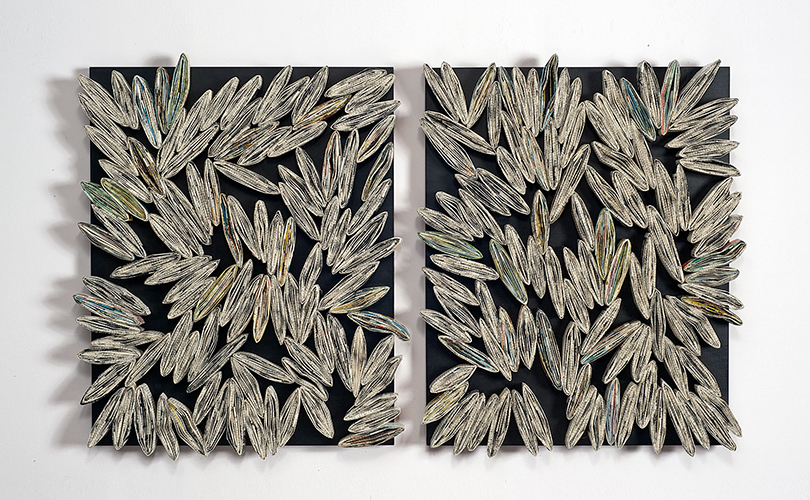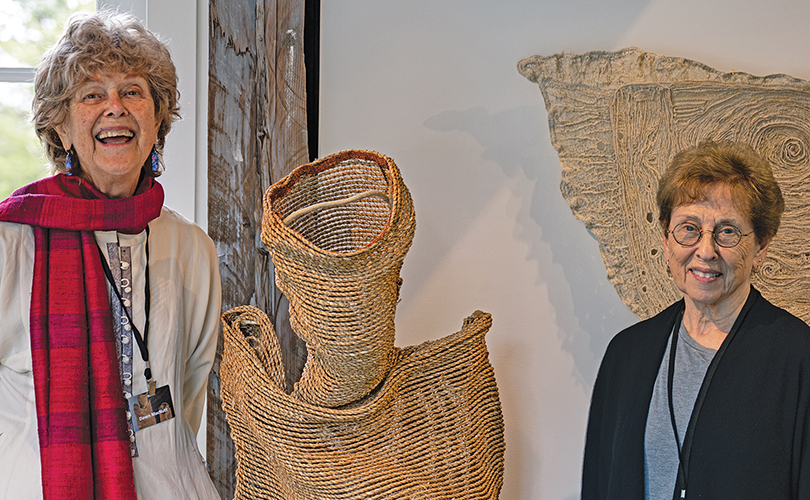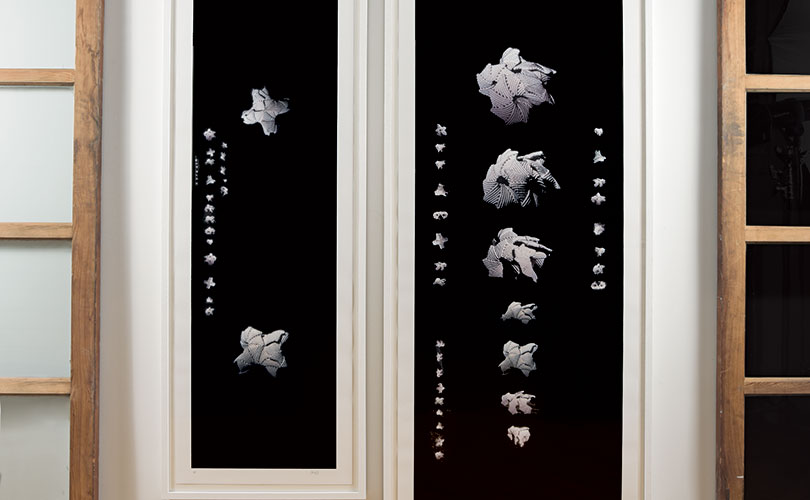The opening of Beauty is Resistance: art is antidote (October 11 – 19) is right around the corner. This Saturday afternoon October 11, 2025 at the opening we’ll be joined on Saturday afternoon by five of the 36 artists in the exhibition.
Here’s a preview of works by these artists that will be included. if you can If you can attend the opening, be sure to ask them about their pieces. (If you can’t attend, you can order a catalog or attend our Zoom talkthough on November 11th — more on that below.
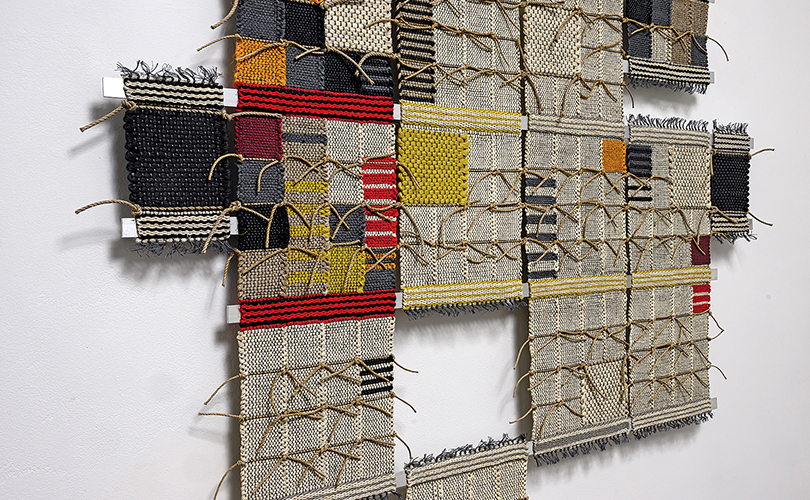
Blair Tate’s Fragment (Reading Between the Lines) is a weaving made of elements — broad strips, larger and smaller blocks, and connecting cords. The elements are constructed and coordinated to suggest balance and imbalance. “I want the whole to feel tenuous, unsettled,” Tate says, “and in this way allude to the ubiquitous condition of change that defines our current times.”

On Saturday, we’ll also be joined by Jin-Sook So, via Sweden (and sometimes Korea). So’s work, Konstruction (Ritual and Renovation), is an innovative painted and electroplated textile made of steel mesh. The work is informed by bojagi, a traditional Korean wrapping and layering technique. So has sought to reinterpret bojagi’s cultural and aesthetic essence through a contemporary lens, creating a dialogue between tradition and modernity.
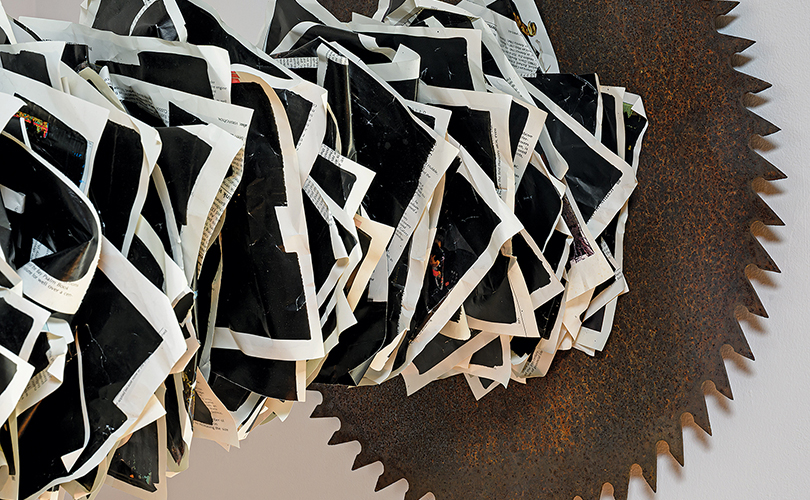
At the turn of the 21st century Wendy Wahl began to view printed paper, particularly encyclopedias, from an elemental standpoint and as a material for expressing the ephemeral and the everlasting. Encyclopedia pages are used as a material in works like Curiosity Under Fire (Reading Between the Lines)in part because the medium can be the message. The purpose of paper has changed, yet for over two millennia it has played a significant role in the identity of cultures and the relationship to their environments. “Each time I deconstruct a discarded encyclopedia book,” Wahl says, “I revisit that which has come before, bound in stillness, yet part of the present moment, asking me to re-see in ways that engage my mind, body and spirit.”
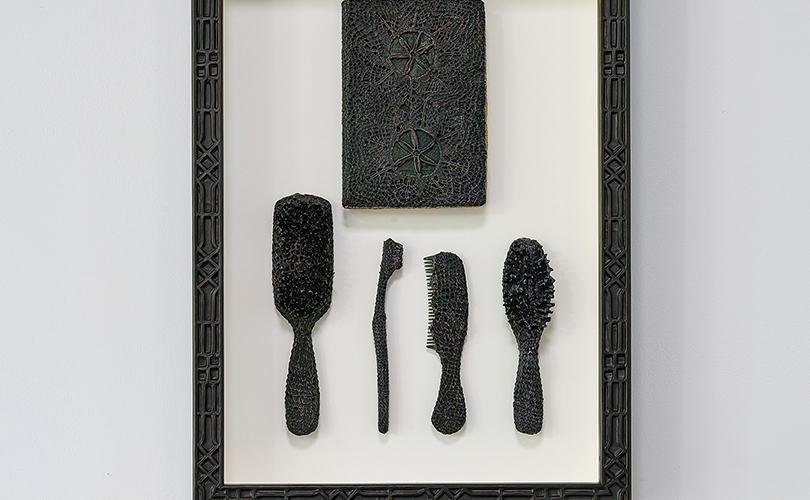
Works by Norma Minkowitz are often emotionally evocative. Frozen in Time (Threads of Memory), her work in Beauty is Resistance, is an example. The work is centered on remembrance, memory becomes tangible. Minkowitz wraps once-used personal items—combs, brushes, a diary—in dark threads as though there is a secret or story hiding between the pages of the book that is sealed and therefore can never be revealed. “Memories are a snapshot of the past that hasn’t been affected by the present,” Minkowitz says. “However, the act of remembering can also change the memory itself. I ask the viewer to be a participant in interpreting my work.“

Ocean (Radical Ornament) by Nancy Koenigsberg is a meditation on movement and endurance, rendered in blue, green, and black wire—an industrial material shaped into an evocation of tides, currents, and undertow. Its layered blue surface suggests water through reef or net. The work offers a vision of the sea as an archive of transformation. In Ocean, wire becomes wave, and pattern becomes persistence.
Join us to see these and many more artworks.
Exhibition Details:
Beauty is Resistance: art as antidote
October 11 – 19browngrotta arts
276 Ridgefield Road
Wilton, CT 06897Times:
Saturday, October 11th: 11AM to 6PM [Opening & Artist Reception]
Sunday, October 12th: 11AM to 6PM
Monday, October 13th through Saturday, October 18th: 10AM to 5PM
Sunday, October 19th: 11AM to 6PM [Final Day]
Safety protocols: No narrow heels — we’ve got barn floors.
Can’t make the exhibition? You can get a copy of the exhibition catalog on our website or sign in to our Zoom presentation, Art on the Rocks: an art talkthrough with a twist — Beauty is Resistance Edition.

